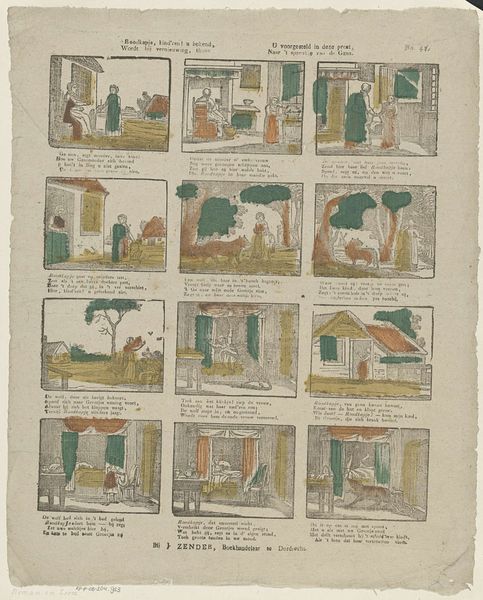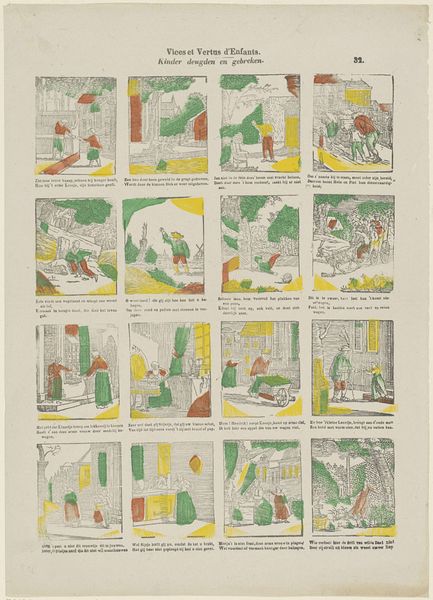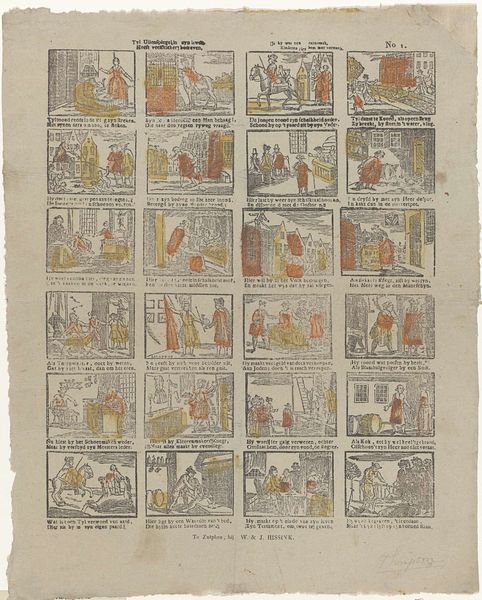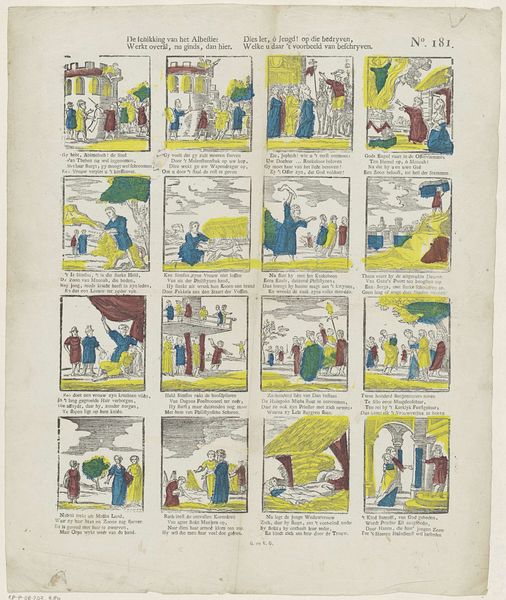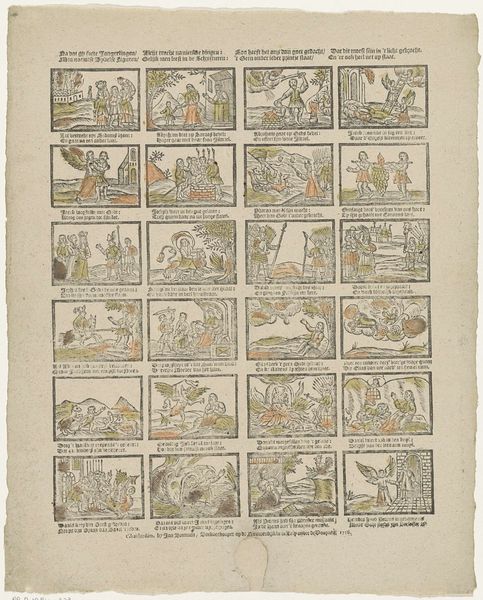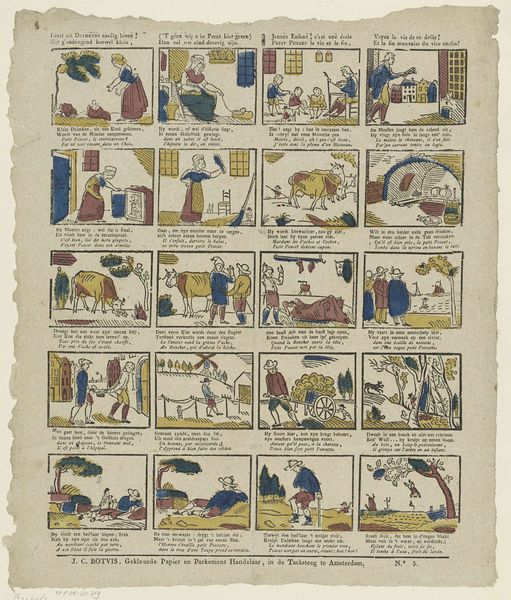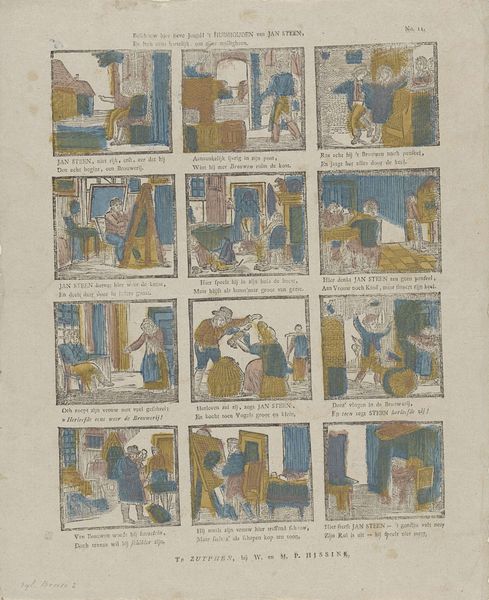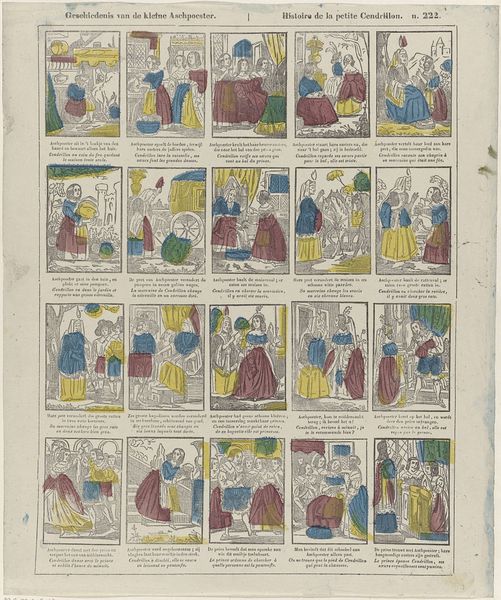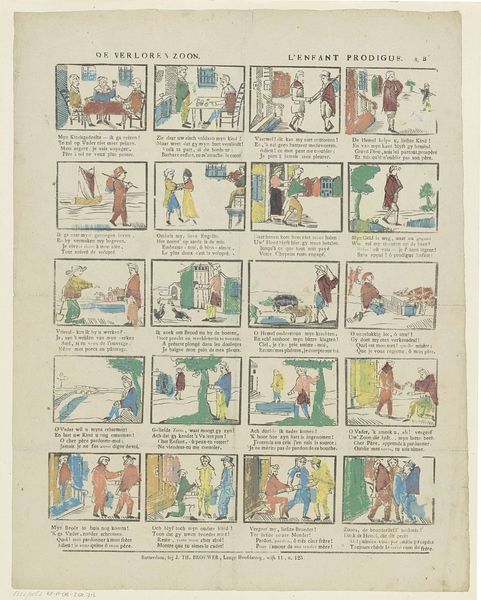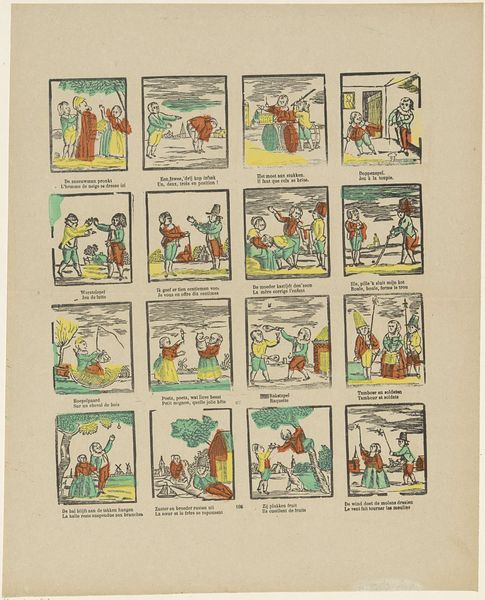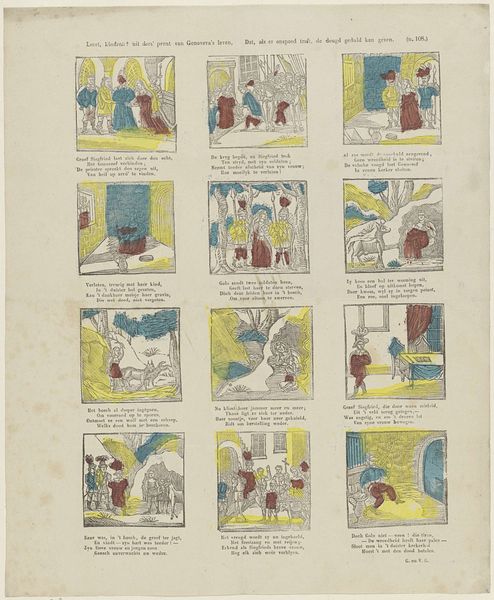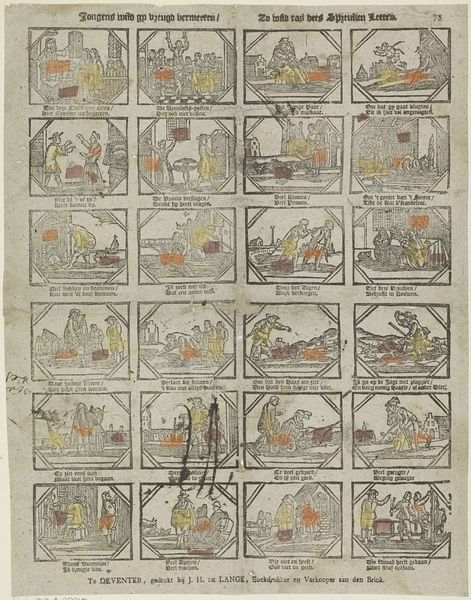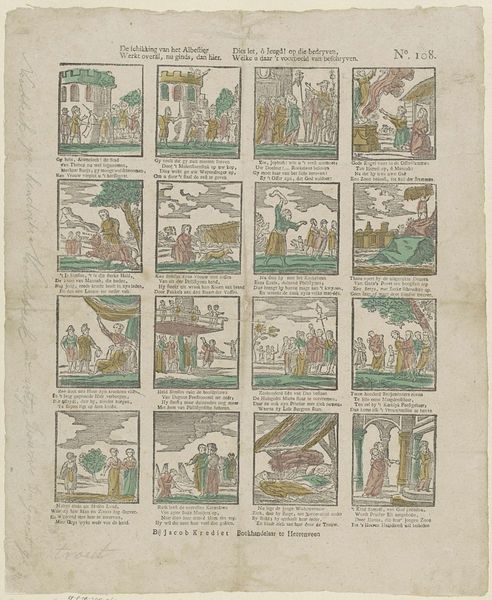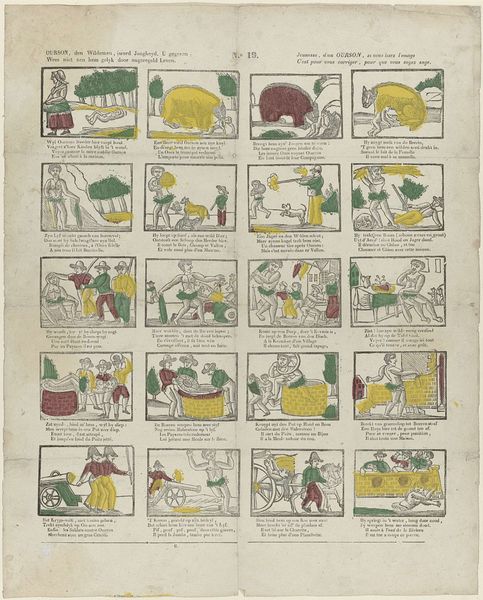
Gij, lieve kind'ren kunt uit Duimpjes voorbeeld leeren, Dat moed en overleg 't gevaar kan overheeren 1806 - 1830
0:00
0:00
print, etching, engraving
#
narrative-art
#
dutch-golden-age
# print
#
etching
#
folk-art
#
genre-painting
#
engraving
Dimensions: height 419 mm, width 337 mm
Copyright: Rijks Museum: Open Domain
Editor: This piece, "Gij, lieve kind'ren kunt uit Duimpjes voorbeeld leeren, Dat moed en overleg 't gevaar kan overheeren" created between 1806 and 1830 by Joseph Zender, employs engraving and etching in its printmaking. It’s got this storybook quality, laid out in little scenes. What strikes you about this work? Curator: It's interesting to see the deployment of printmaking techniques, particularly etching and engraving, to disseminate a popular narrative. Think about the accessibility of this medium – it's reproducible, relatively inexpensive. What does that say about the intended audience and the social function of art at that time? This print challenges the high art/low art binary. It speaks to craft, labor, and the production process. Who was consuming this, and how might its message have been received, do you think? Editor: I imagine this was pretty widespread among households, maybe as an educational tool, which makes me consider the labor involved. How does its reproducibility influence your interpretation, versus, say, a singular painting meant for an elite patron? Curator: Precisely. This isn't about unique artistic genius in the traditional sense, it is not about the unique master's touch. Instead, it draws our attention to the mechanics of production. The act of reproducing the images, the workshop, the potential for collaborative labor – these aspects become central to the artwork’s meaning. Consider Zender's role as a bookseller ("Boekhandelaar") as integral to understanding his material practice and broader circulation of his moralizing narrative art. Editor: So, focusing on the method brings into light social themes of art at that time. I never thought to see it like that. Thanks! Curator: Indeed. Paying attention to the means and social contexts through which art emerges enables us to ask questions that exceed the purely aesthetic experience and to have a greater, deeper cultural understanding of an artwork.
Comments
No comments
Be the first to comment and join the conversation on the ultimate creative platform.
